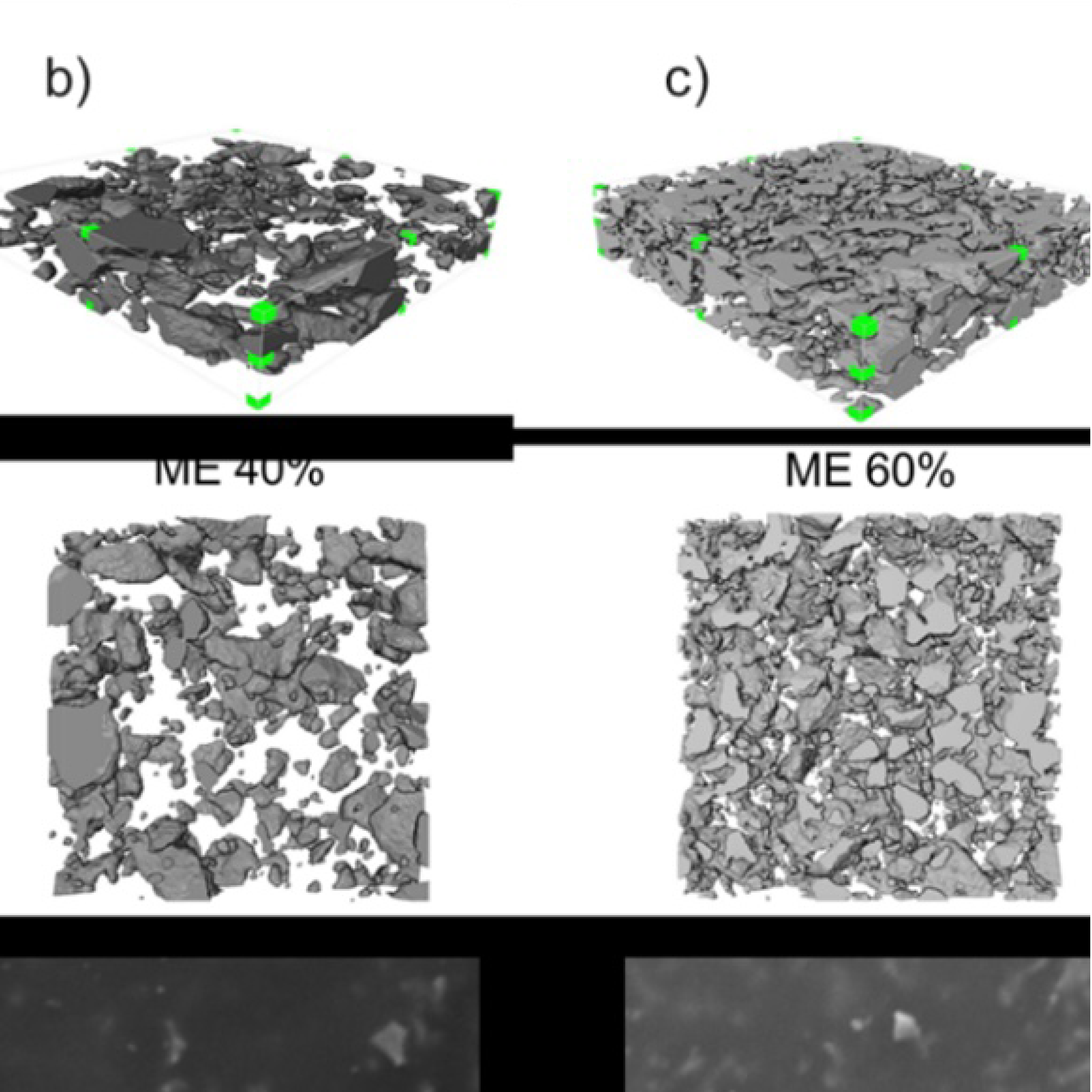
3D Microstructure of Soft Magnetic Elastomer Membrane
Soft magnetic elastomer membranes enable fast magnetic actuation under low fields. In our project, we… Read More
Events & Resources
News, Events and Resources from NXCT Partners
Groundwater percolation through nuclear waste disposal facilities can be challenging post-closure as they may enhance the subsurface mobility of radionuclides and contaminants. These disposal facilities are multi-barrier and comprise canisters, engineering barriers and geological barriers. Cement, which is used as waste form encapsulation, backfill material and construction material, is one of the engineering barriers to be affected by groundwater saturation.
This work is dedicated to study the interaction between cement and microbes with a low concentration of electron donor and acceptor over a long period. Microcracks developed in the cement system due to their rigidity give microbes an easy way to migrate. This slowly leads to microbial-induced calcite precipitation (MICP), which is effective for concrete surface protection and crack remediation. It decreases concrete permeability and penetration of corrosive substances and hence, improves its durability.
Experiments were planned with three different treatments in synthetic groundwater composition cement tablets and microbial inoculum. Systems with low carbon sources showed very little microbial activity in comparison to high carbon source systems.
NXCT is used for scaning the treated cement samples with a good resolution of 5µm pixels and 0.4 times magnification in Versa620. Pore size distribution inside and any carbonate deposition on the surface of different treatments were segmented and compared. It was found that the low-carbon system had no significant change in pore size distribution in 6 months but a clear decrease in pore size distribution in the high-carbon source system was observed. Also, there was a carbonate layer on the surface of the latter system which was segmented using Avizo.
This project is focused on the safety case of cement barriers used in nuclear waste disposal sites and how microbes can affect them over time. Since the geological disposal facility is a very big project, it is important to study different prospects of safety-related issues.
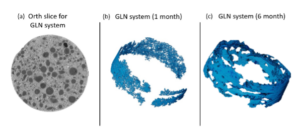
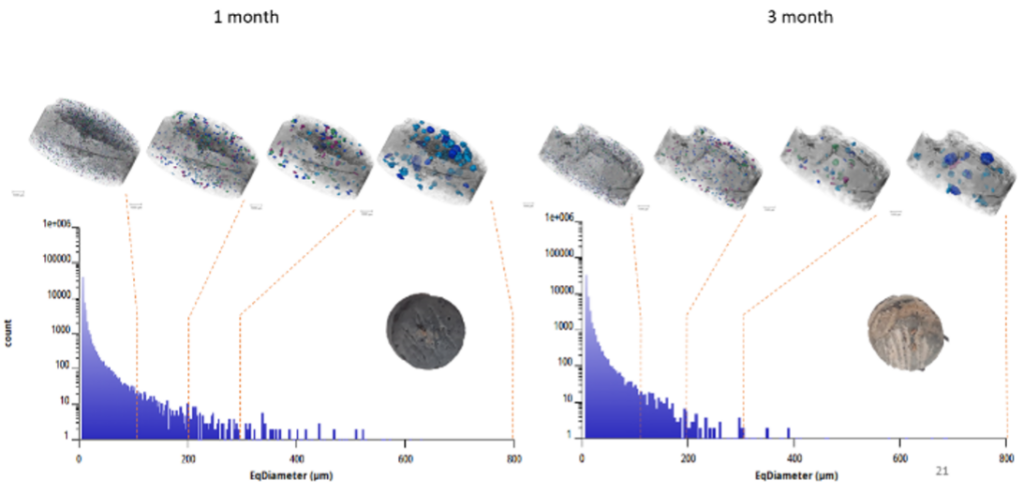
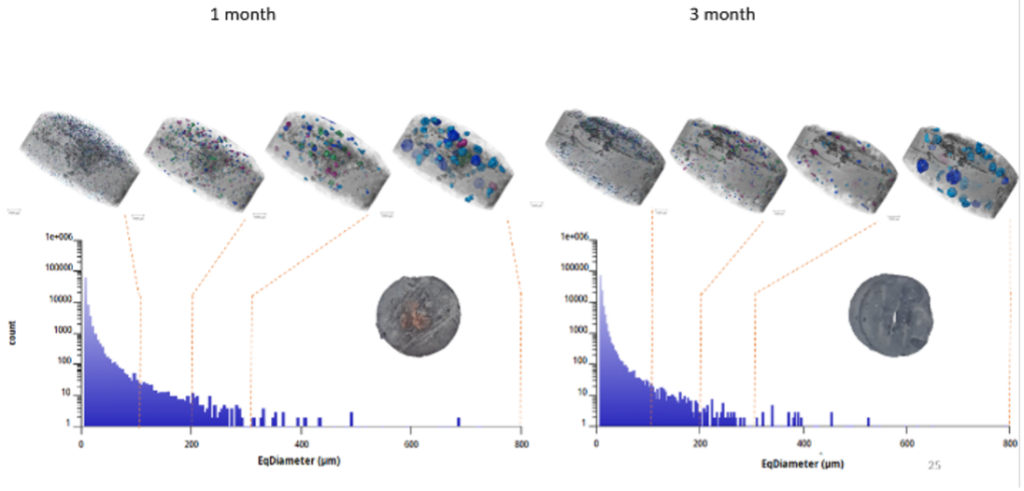

Soft magnetic elastomer membranes enable fast magnetic actuation under low fields. In our project, we… Read More
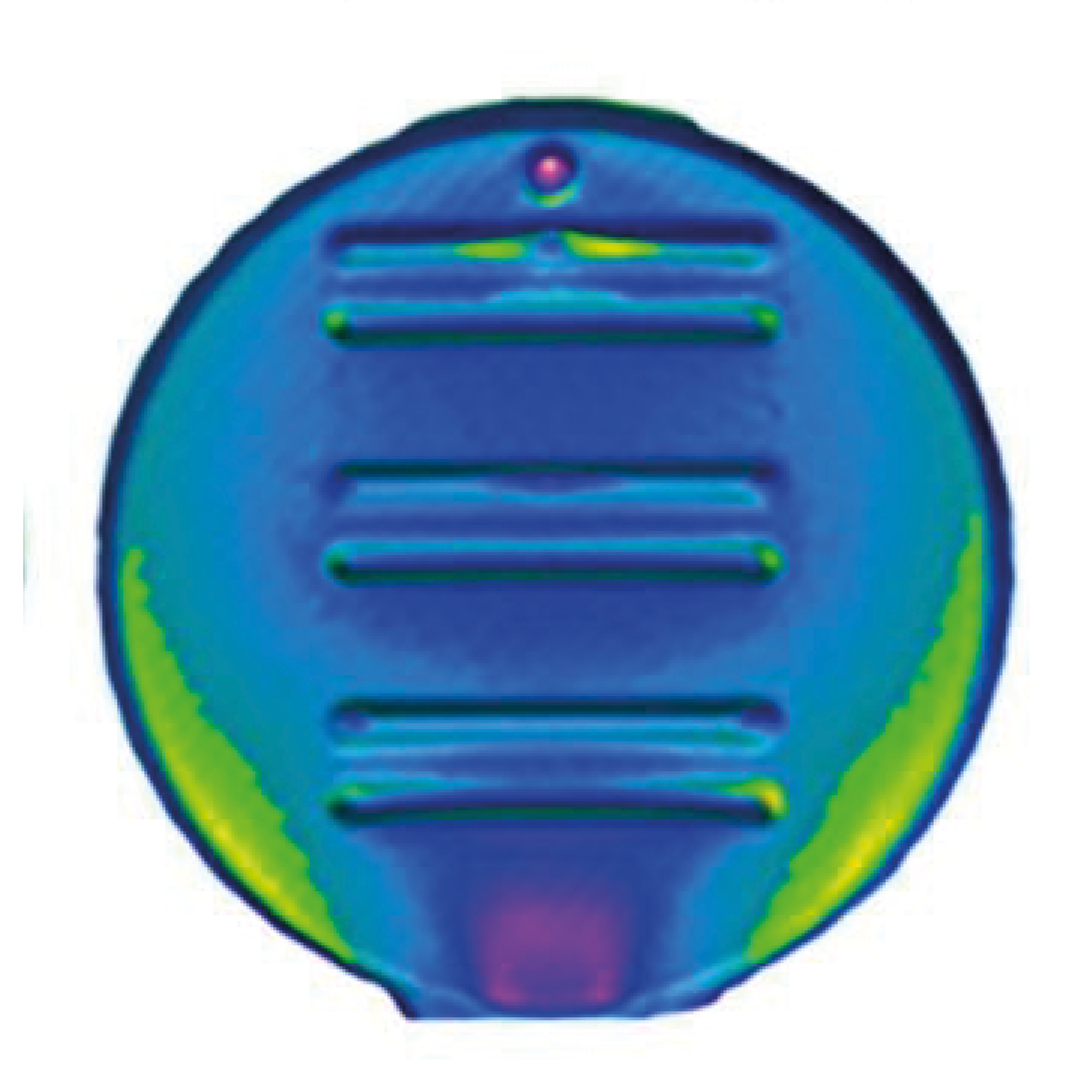
Nowadays, the increasing capability of micro-manufacturing processes enables the manufacture of miniature products with extremely… Read More
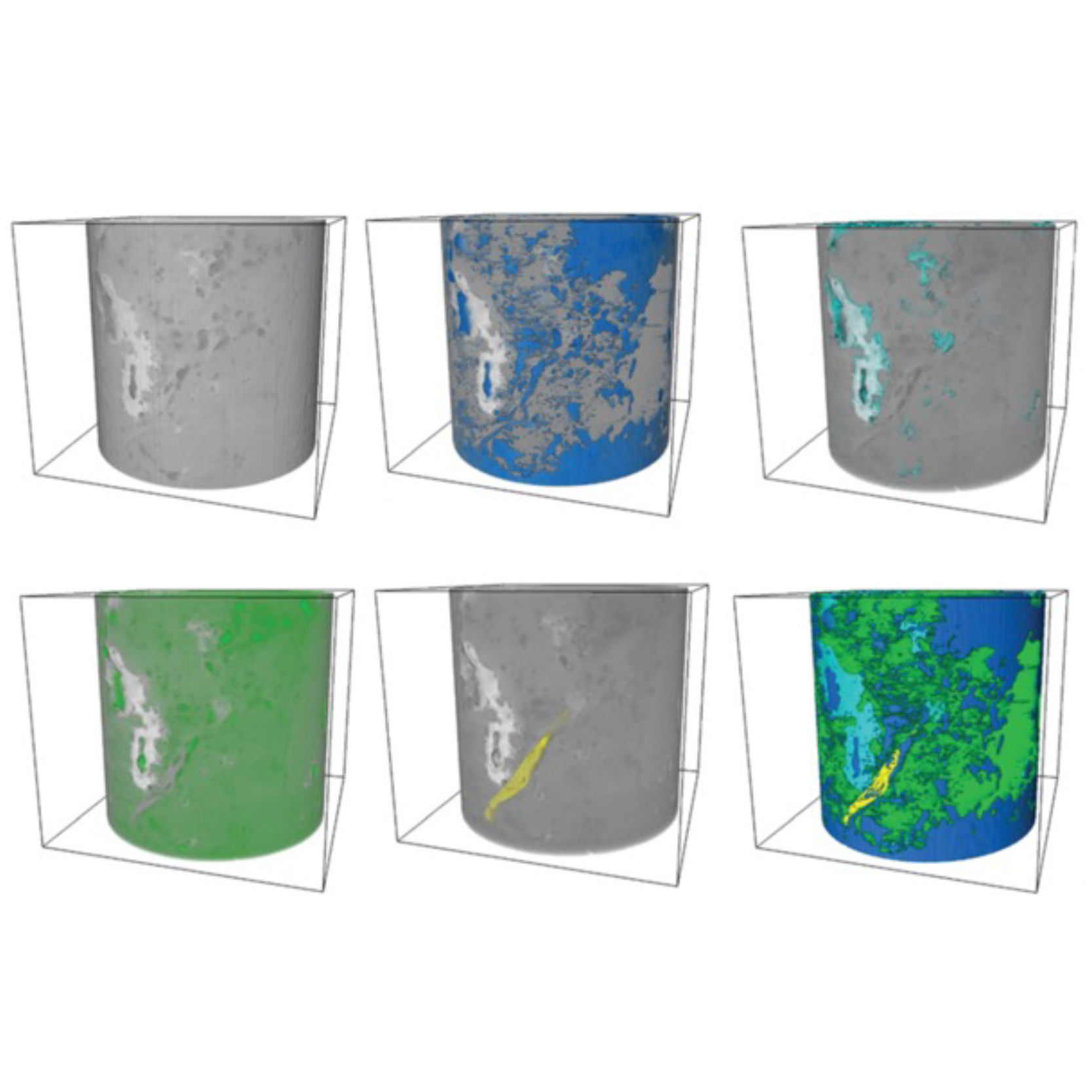
Injection of CO2 into shale reservoirs to enhance gas recovery and simultaneously sequester greenhouse… Read More